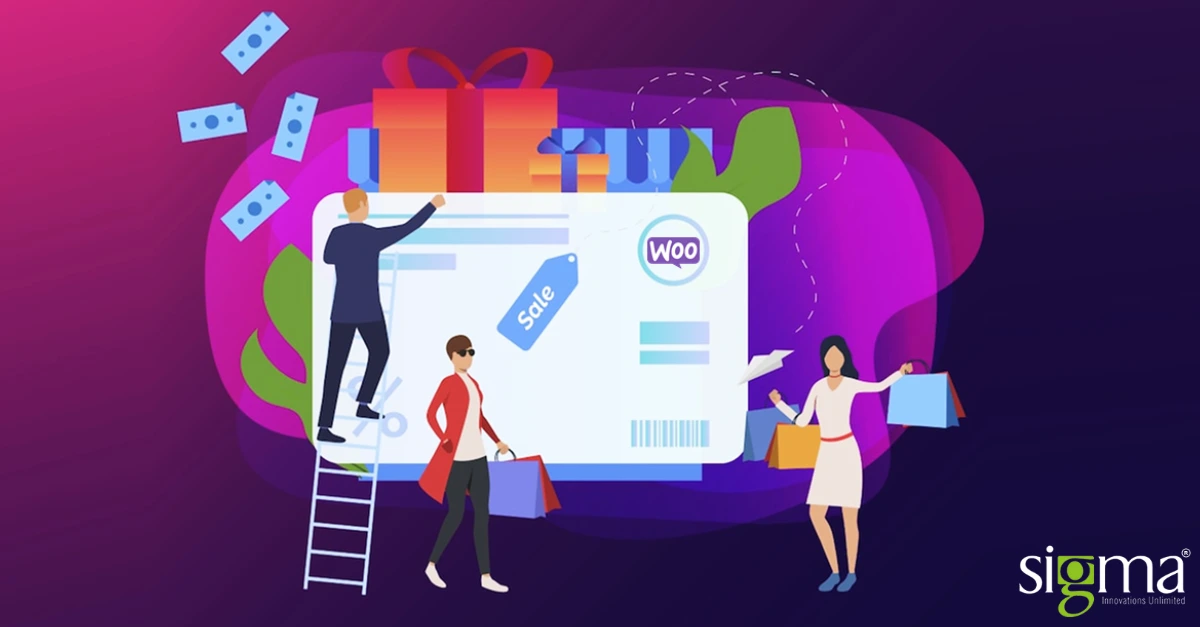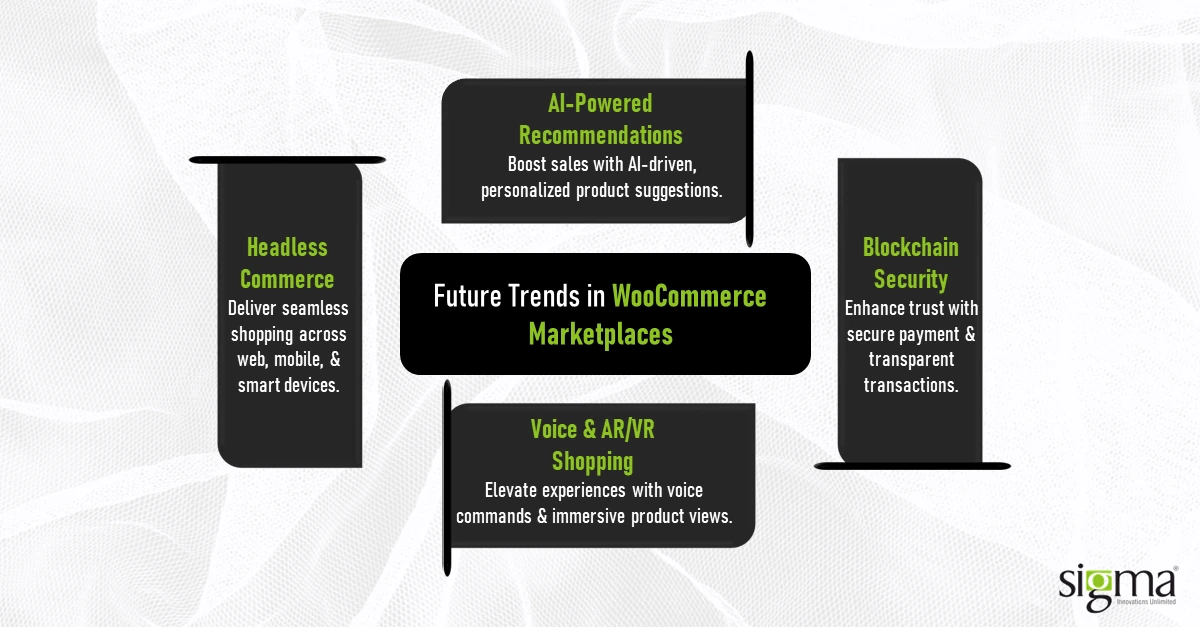Top WooCommerce Marketplace Plugins You Must Try

Fueling the growth of eCommerce, WooCommerce has emerged as one of the most popular eCommerce platforms, powering millions of online stores. Its flexibility, scalability, and seamless integration with WordPress Hosting make it a go-to choice for businesses of all sizes.
But here’s the real game-changer—multi-vendor marketplaces. With platforms like Amazon, eBay, and Etsy setting the benchmark, more businesses are shifting towards eCommerce solutions that allow multiple vendors to sell under one roof. The reason? Higher revenue, diverse product offerings, and a better customer experience.
This is where the WooCommerce Marketplace Plugin comes into play. It transforms a standard WooCommerce store into a full-fledged WooCommerce Marketplace, allowing multiple vendors to manage their products, orders, and commissions—all from a single platform. For decision-makers in eCommerce Development Solutions, this plugin presents an incredible opportunity to scale operations, increase profitability, and stay ahead of the competition.
In this blog, we’ll dive deep into the benefits, features, and implementation of the WooCommerce Marketplace Plugin—helping you understand why investing in WooCommerce Development Services is the next big move for your business.
Understanding the WooCommerce Marketplace Plugin
The WooCommerce Marketplace Plugin is a powerful tool that extends the capabilities of a standard WooCommerce store by enabling multi-vendor functionality. Unlike a traditional WooCommerce store, where only the site owner sells products, a WooCommerce Marketplace allows multiple vendors to list, manage, and sell their products—all within the same platform.
How Does It Differ from a Standard WooCommerce Store?
A standard WooCommerce store is a single-vendor setup where the admin manages inventory, pricing, and orders. However, with a WooCommerce Marketplace Plugin, the admin can onboard multiple vendors, automate commission structures, and streamline order management—creating a scalable eCommerce solution similar to Amazon or eBay.
Top WooCommerce Marketplace Plugins
If you’re looking to build a WooCommerce Marketplace, here are some top plugins:
- Dokan – A feature-rich solution with an intuitive vendor dashboard.
- WC Vendors – Popular for its robust commission management system.
- YITH WooCommerce Multi-Vendor – Great for businesses needing flexibility in vendor roles.
Key Benefits of WooCommerce Marketplace Plugins

- Scalability – Easily expand your marketplace by adding more vendors.
- Automation – Set commission rates, manage payouts, and streamline vendor operations.
- Vendor Management – Each vendor gets a separate dashboard for seamless store management.
- Increased Revenue Potential – Earn commissions on each vendor sale, maximizing profitability.
With the right WooCommerce Development Services, businesses can leverage these plugins to build a thriving eCommerce Marketplace and tap into new revenue streams.
Key Features of a High-Performing WooCommerce Marketplace
A successful WooCommerce Marketplace isn’t just about adding vendors—it’s about creating a seamless, efficient, and secure ecosystem for buyers and sellers. To achieve this, WooCommerce Marketplace Plugins offer a range of powerful features that streamline operations and enhance user experience.
1. Vendor Management
Efficient vendor management is the backbone of any marketplace. The WooCommerce Marketplace Plugin simplifies:
- Onboarding: Vendors can register, set up stores, and manage profiles effortlessly.
- Commissions: Admins can set fixed, percentage-based, or tiered commissions per vendor.
- Payouts: Automated payments ensure smooth vendor transactions, improving retention.
2. Product & Inventory Management
A well-structured eCommerce Marketplace allows vendors to manage their product listings without admin intervention. Vendors can:
- Create and update product descriptions, images, and pricing.
- Track stock levels and receive low-stock alerts.
- Categorize and tag products for better discoverability.
3. Order & Shipping Management
To maintain smooth operations, WooCommerce Development Services integrate logistics automation, allowing vendors to:
- Manage order processing and fulfillment.
- Set their own shipping rates and zones.
- Enable real-time tracking for customers.
4. Commission Structures
A flexible commission model ensures a win-win scenario for marketplace owners and vendors. Options include:
- Fixed commissions (flat rate per sale).
- Percentage-based commissions (revenue share per order).
- Tiered commissions (higher sales = lower commission rates).
5. Customer Experience & Engagement
User experience drives marketplace success. Key features include:
- Ratings & Reviews – Builds trust and credibility.
- Personalized Recommendations – AI-powered product suggestions.
- Seamless Checkout – Optimized payment gateways for quick transactions.
6. Security & Compliance
A WooCommerce Marketplace must prioritize security and compliance by ensuring:
- Secure payment gateways with fraud detection.
- GDPR compliance for user data protection.
- SSL encryption to prevent cyber threats.
By leveraging eCommerce Development Solutions, businesses can build a high-performing WooCommerce Marketplace that ensures scalability, security, and profitability.
Also Read: Pimcore & Adobe Commerce Integration: All You Need to Know!
Why Enterprises Should Consider a WooCommerce Marketplace
As eCommerce continues to evolve, businesses must adapt to stay competitive. One of the biggest trends shaping the industry is the rise of multi-vendor marketplaces. By leveraging a WooCommerce Marketplace, enterprises can unlock new growth opportunities, reduce overhead costs, and create a scalable business model. Here’s why it’s a game-changer:
1. Growing eCommerce Trend
The demand for multi-vendor marketplaces is skyrocketing. With platforms like Amazon, Walmart Marketplace, and Etsy leading the way, customers are increasingly drawn to marketplaces that offer variety, competitive pricing, and a seamless shopping experience. A WooCommerce Marketplace allows businesses to capitalize on this trend while maintaining full control over their platform.
2. Revenue Diversification
Unlike a traditional eCommerce store, where revenue is limited to product sales, a WooCommerce Marketplace generates multiple income streams. Marketplace owners can earn through:
- Vendor commissions (fixed or percentage-based).
- Subscription fees for premium vendor memberships.
- Featured listings or paid promotions.
3. Scalability & Flexibility
Expanding a single-vendor store often requires significant investment in inventory and logistics. With a WooCommerce Marketplace, enterprises can:
- Scale effortlessly by onboarding new vendors.
- Expand product offerings without managing stock.
- Automate vendor operations through WooCommerce Development Services.
4. Lower Operational Costs
A vendor-driven eCommerce solution means marketplace owners don’t have to handle inventory, warehousing, or shipping logistics. This significantly reduces overhead costs, allowing businesses to focus on platform growth and customer experience.
5. Competitive Advantage
With more brands moving online, standing out is crucial. A WooCommerce Marketplace offers:
- Diverse product selections that attract a broader audience.
- Enhanced customer engagement through reviews, ratings, and personalized recommendations.
- A future-proof business model that ensures long-term success.
For enterprises looking to scale their online presence, investing in WooCommerce Development Services is the next logical step. With the right eCommerce Development Solutions, businesses can transform their WooCommerce stores into thriving, revenue-generating marketplaces.
Choosing the Right WooCommerce Marketplace Plugin for Your Business
Selecting the best WooCommerce Marketplace Plugin is crucial for building a scalable, efficient, and vendor-friendly platform. With multiple options available, enterprises need to evaluate plugins based on their business needs. Here’s what to consider before making a choice.
Key Factors to Consider
- Business Model Alignment – Not all marketplace plugins cater to every business model. Whether you’re running a B2B, B2C, or niche marketplace, ensure the plugin supports your structure.
- Scalability – As your marketplace grows, your plugin should handle increasing vendor and product volumes without performance issues.
- Payment Gateway Integrations – A robust WooCommerce Marketplace should support multiple payment gateways (PayPal, Stripe, bank transfers) and enable automated vendor payouts.
- Customer Support & Documentation – Comprehensive support and documentation ensure smooth setup, troubleshooting, and customization. Look for plugins with active developer communities and strong customer service.
- Vendor Experience & Usability – A marketplace is only as good as its vendor experience. A user-friendly vendor dashboard, easy product management, and clear commission structures attract quality sellers.
Comparative Analysis of Leading WooCommerce Marketplace Plugins
- Plugin
- Dokan
- WC Vendors
- YITH Multi-Vendor
- WCFM Marketplace
- Best For
- Large-scale marketplaces
- Startups & small businesses
- Mid-sized marketplaces
- Feature-rich & customizable
- Key Features
- Frontend vendor dashboard, commission management, subscription models
- Flexible commission structures, vendor stores, Stripe & PayPal integration
- Vendor reviews, commission settings, WooCommerce compatibility
- Advanced shipping, booking, memberships, analytics
- Pricing
- Freemium ($149+/yr)
- Freemium ($299+/yr)
- Paid (€149.99/yr)
- Freemium ($59+/yr)
Also Read: How FinTech & Technological Innovations Are Shaping the Future of eCommerce
Best Practices for a Successful WooCommerce Marketplace
Building a WooCommerce Marketplace is just the beginning—sustaining and growing it requires strategic planning and execution. Here are five best practices to ensure long-term success.
1. Optimizing Vendor Onboarding
A smooth vendor onboarding process encourages more sellers to join your marketplace. Make it easy with:
- Self-service registration with guided steps.
- Pre-configured store templates for faster setup.
- Automated approval workflows to reduce admin workload.
2. Automating Operations
Automation helps streamline order processing, payments, and customer interactions. Leverage:
- AI-powered chatbots for instant customer support.
- Order fulfillment automation to reduce manual tasks.
- Automated payout systems to ensure timely vendor payments.
3. Enhancing User Experience
A well-designed eCommerce Marketplace ensures customer satisfaction and repeat business. Focus on:
- Mobile responsiveness for seamless browsing on any device.
- Fast checkout with multiple payment options.
- Intuitive navigation to improve product discoverability.
4. SEO & Marketing Strategies
Driving organic traffic is essential for marketplace success. Use:
- Keyword-rich product descriptions optimized for search engines.
- Content marketing through blogs and guides.
- Social media & PPC campaigns to attract more buyers and vendors.
5. Data Analytics & Performance Tracking
Monitoring marketplace performance helps in making data-driven decisions. Implement:
- Google Analytics & WooCommerce reports for traffic insights.
- Vendor performance tracking to optimize commission structures.
- Customer behavior analysis to refine marketing strategies.
By following these best practices and investing in WooCommerce Development Services, businesses can create a high-performing, scalable, and profitable WooCommerce Marketplace.
Future Trends in WooCommerce Marketplaces
The WooCommerce Marketplace landscape is evolving rapidly, driven by advancements in technology and changing consumer behavior. To stay ahead, businesses must embrace the latest innovations that enhance user experience, security, and omnichannel selling. Here are some key trends shaping the future of WooCommerce Marketplaces.

1. AI-Powered Product Recommendations
Artificial Intelligence (AI) is revolutionizing eCommerce Solutions by offering personalized shopping experiences. AI-powered recommendation engines analyze user behavior to suggest relevant products, increasing conversion rates and customer retention. Marketplaces leveraging AI can drive higher engagement and sales.
2. Headless Commerce for Omnichannel Experiences
Headless commerce decouples the frontend from the backend, allowing businesses to create customized shopping experiences across multiple platforms. With WooCommerce’s API-driven approach, marketplace owners can seamlessly integrate their store with mobile apps, smart devices, and social commerce channels.
3. Increased Adoption of Blockchain for Security and Transparency
Security and trust are critical in multi-vendor marketplaces. Blockchain technology enhances payment security, prevents fraud, and ensures transparent vendor transactions. Future WooCommerce Marketplaces will likely adopt blockchain for secure payments, decentralized reviews, and smart contracts.
4. Rise of Voice Commerce and AR/VR Shopping Experiences
Voice-enabled shopping is growing with the popularity of Alexa and Google Assistant. At the same time, Augmented Reality (AR) and Virtual Reality (VR) are transforming online shopping by offering immersive product experiences. WooCommerce Marketplaces integrating these technologies will attract tech-savvy consumers and drive higher engagement.
Staying ahead of these trends requires investing in WooCommerce Development Services to build a future-proof, scalable marketplace. Businesses that adapt to these innovations will gain a competitive edge in the ever-evolving eCommerce landscape.
Final Thoughts
The rise of WooCommerce Marketplaces is reshaping the eCommerce landscape, offering businesses a scalable, cost-effective way to expand their product offerings without managing inventory. With the right WooCommerce Marketplace Plugin, enterprises can streamline vendor management, enhance customer experience, and boost revenue through automation and advanced features.
For C-suite decision-makers, investing in a WooCommerce Marketplace offers:
- Scalability – Expand product offerings without managing inventory.
- Revenue Diversification – Earn through commissions and vendor partnerships.
- Automation & Efficiency – Reduce manual work with AI-powered tools.
- Competitive Edge – Stay ahead with cutting-edge features like AI recommendations and headless commerce.
At Sigma Infosolutions, we specialize in WooCommerce Development Services, helping businesses build, optimize, and scale their multi-vendor marketplaces. Whether you’re looking to integrate the best plugins, automate operations, or enhance user experience, our team has the expertise to make it happen.
Ready to transform your WooCommerce store into a thriving marketplace? Contact us today to know more about our WooCommerce Development Services and take your eCommerce business to the next level with leading WooCommerce Development Company!
Frequently asked questions
1. What are WooCommerce Marketplace Plugins, and why are they essential for online stores?
WooCommerce Marketplace Plugins extend the functionality of your WooCommerce store, enabling multi-vendor capabilities, commission management, and seamless vendor onboarding. If you’re looking to create a thriving marketplace, investing in high-quality WooCommerce Development Services ensures smooth integration, scalability, and enhanced user experience.
2. How do I choose the best WooCommerce Marketplace Plugin for my business?
Selecting the right plugin depends on your business model, vendor management needs, and scalability goals. A professional WooCommerce Development Company can help analyze your requirements and recommend the best WooCommerce Marketplace solutions tailored to your business.
3. Can WooCommerce Marketplace Plugins integrate with third-party tools?
Yes, most WooCommerce Marketplace plugins support integration with various payment gateways, shipping providers, CRMs, and analytics tools. Our WooCommerce Plugin Development, Integration, and Upgradation services ensure seamless compatibility with essential eCommerce tools.
4. What are the key benefits of using WooCommerce for a multi-vendor marketplace?
WooCommerce is a flexible and cost-effective platform with extensive plugin support, making it ideal for marketplace setups. With expert eCommerce Development Solutions, businesses can enhance functionality, customize themes, and ensure an optimized user experience.
5. Do I need dedicated WordPress hosting for my WooCommerce Marketplace?
Yes, choosing reliable WordPress Hosting is crucial for performance, security, and scalability. As part of our eCommerce Solutions, we help businesses select and configure optimized hosting environments for their WooCommerce Marketplace.
6. How can I customize my WooCommerce Marketplace to match my brand identity?
Customization involves theme development, plugin modifications, and UI enhancements. Our WooCommerce Custom Development Services include tailored solutions such as WooCommerce Theme Development, responsive design, and seamless third-party integrations to match your brand identity.


